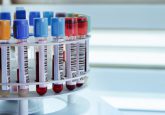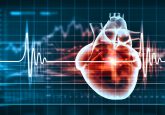Microsampling: the way forward for preclinical animal studies in the pharmaceutical and chemical industries

 The Bioanalysis Zone survey on microsampling provides some very interesting information and food for thought for the pharmaceutical industry. It complements and confirms information coming from a number of groups including the NC3Rs microsampling working group and the European Bioanalysis Forum Dried Blood Spot and Liquid Microsampling consortium [1,2,3].
The Bioanalysis Zone survey on microsampling provides some very interesting information and food for thought for the pharmaceutical industry. It complements and confirms information coming from a number of groups including the NC3Rs microsampling working group and the European Bioanalysis Forum Dried Blood Spot and Liquid Microsampling consortium [1,2,3].
The survey demonstrates the global momentum in the use of microsampling in the pharmaceutical and biotechnology industry. It also shows the importance that companies are placing on the 3Rs, with two of the five major reasons for implementing microsampling being reduction in the number of animals and refinement of procedures, reducing animal stress. The potential of microsampling is threefold; 1. scientific (linking drug/chemical exposure directly to toxic effect); 2. financial (reduced costs) and 3. reduction of animal use (with some respondents quoting animal savings of over 70%). Therefore it raises the question of what is stopping us from implementing microsampling more frequently.
The hurdles cut across practical and regulatory concerns. From a practical perspective, there are bioanalytical limitations for many compounds in addition to more general difficulties associated with changes in practice and process for in vivo sampling techniques. Interestingly, the survey shows that many companies still require additional validation of microsampling. This will be critical to increased uptake of microsampling, specifically in regulatory toxicology studies, to realise the benefits.
For regulatory acceptance and increased uptake we need to focus on:
- Consistent terminology, for example, what is a microsample? This survey confirms that the majority of companies agree that it is less than 50ul
- Collaboration and data-sharing across companies and sectors to share practice (e.g. number of timepoints), study design (e.g. number of animals) and physiological and pathology data on the impact of microsampling
- Increased communication between clinicians, bioanalysts, toxicologists and pathologists on how microsamples and the resulting data are obtained so that all needs are met
The related regulatory guidance for toxicokinetics is ICH3a. Currently, an accompanying Q&A document that is focussed on microsampling is being prepared by ICH. Therefore, I would call on companies who have internal data on the impact of microsampling on animals and scientific outcome (e.g. clinical pathology parameters) to consider publication and dissemination to provide a larger evidence-base for regulatory discussion.
Over the next five years I predict a large increase in the use of microsampling across all study types, particularly in GLP toxicology studies. This is likely to be the case for non-rodents in addition to rodents with refined microsampling techniques for non-human primates, minipigs and dogs increasingly becoming available. Currently, most of the focus on microsampling is for toxicokinetic analysis of blood samples, however,promising work is being conducted to reduce blood samples for clinical pathology measurements to reduce animal use even further. There is a lot of non-competitive collaboration in this area across companies including contract research organisations; this is great for the industry as a whole and has large potential to advance the 3Rs.
References:
[1] Chapman K, Chivers S, Gliddon D et al. Overcoming the barriers to the uptake of nonclinical microsampling in regulatory safety studies. Drug Discov. Today 19(5), 528–532 (2014).
[2] Chapman K, Burnett J, Corvaro M et al. Reducing pre-clinical blood volumes for toxicokinetics: toxicologists, pathologists and bioanalysts unite. Bioanalysis (in press).
[3] Timmerman P, White, S, Cobb Z, de Vries R, Thomas E, van Baar, B. Update of the EBF recommendation for the use of DBS in regulated bioanalysis integrating the conclusions from the EBF-microsampling consortium. Bioanalysis 5(17), 2129–2136 (2013).
* The NC3Rs is a UK-based scientific organisation dedicated to replacing, refining and reducing the use of animals in research and testing. To find out more, visit the NC3Rs website at: http://www.nc3rs.org.uk/
Our expert opinion collection provides you with in-depth articles written by authors from across the field of bioanalysis. Our expert opinions are perfect for those wanting a comprehensive, written review of a topic or looking for perspective pieces from our regular contributors.
See an article that catches your eye? Read any of our articles below for free.






